Reading Time: 9 minutes
Mention the “Seafood Capital of the World,” and people will listen – whether they like catching fish or not. The signature lightly-battered, deep-fried delicacies from Calabash have made the town a household name far beyond the Brunswick Islands. But fishing in Calabash, NC gives you much more than a cook-up…
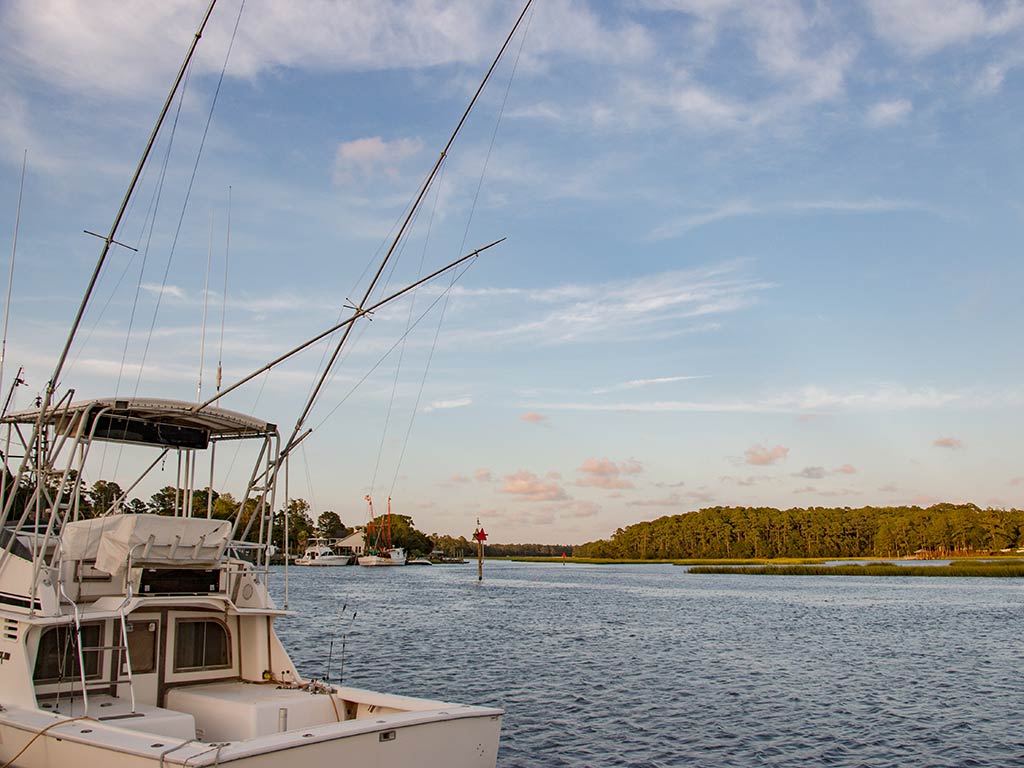
From the inshore creeks to the Gulf Stream, there are miles of water to explore. And maybe you’ll even catch your own supper, Calabash-style.
And we’re here today to give you a helping hand. In this guide, you’ll learn all about the top species in the area, how to catch them, and much more. Settle in and get ready to find out all you need to know about Calabash fishing.
Types of Fish in Calabash
Way back when Calabash-style seafood was just a local secret, waterside restaurants and shacks cooked up the Shrimp they’d just caught from their very own docks. That’s because these waters are an important spawning ground – not just for Shrimp, but for the species that see them as bait. And as any angler knows, when there’s bait, there’s fish. So read on and see what you can find.
Mackerel
Some of the fastest, most exciting fish in the Atlantic come up close to Calabash’s shores. King and Spanish Mackerel are top targets – as challenging opponents and first-class table fare.
King Mackerel
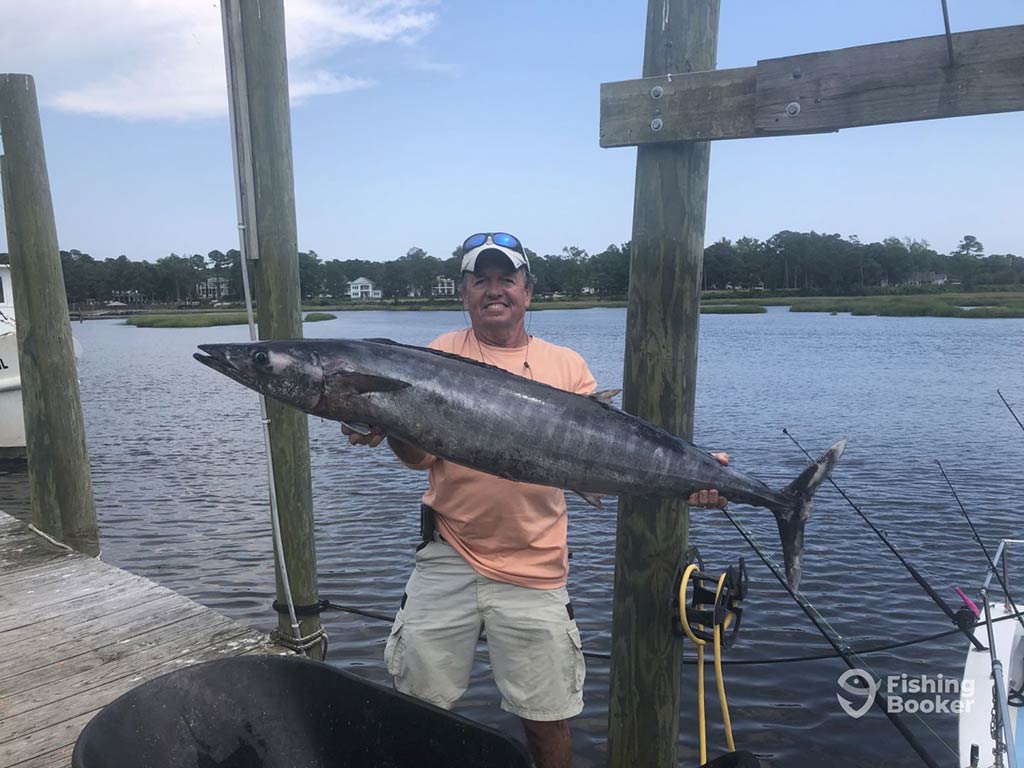
Photo courtesy of Lucky Strike Charters
Kingfish are the biggest of Calabash’s local Mackerel species. They swim these waters from spring through winter, peaking nearshore from late April to June and again from October to December. This is when large schools of their favorite bait fish – menhaden, aka “pogies” – school right up close to the Little River Inlet, with these monsters hot on their tails.
Most local charter boats catch King Mackerel using bait – either live menhaden or frozen cigar minnows. Head out with them to troll slowly near the beaches or over bottom structure, depending on the time of year. Then, the fight will be on! Hold on tight as you try to reel in your catch.
Spanish Mackerel
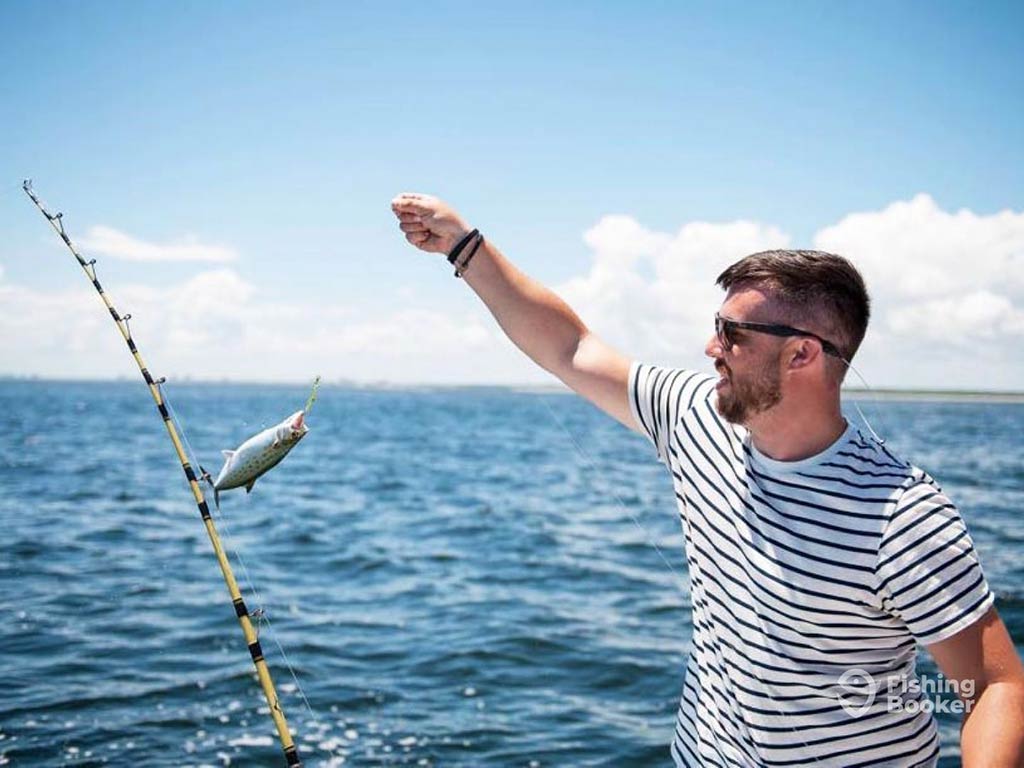
Photo courtesy of Fisher Of Men Charters
Spanish Mackerel aren’t too fussy about bait. Instead, they’re happy to attack almost anything that’s shiny and moves quickly. This makes them great fun to target. These eye-catching fish start to appear in April and swarm along the beaches in May and June. If you fish for them mid-morning, you could catch your limit just in time for lunch!
Both Spanish and King Mackerel are oily fish that are rich in vitamins and protein. This means they’re excellent for your overall health and well-being. So take your catch to any one of Calabash’s numerous seafood restaurants and pig out, guilt-free. After all that fishing, you deserve it!
Red Drum
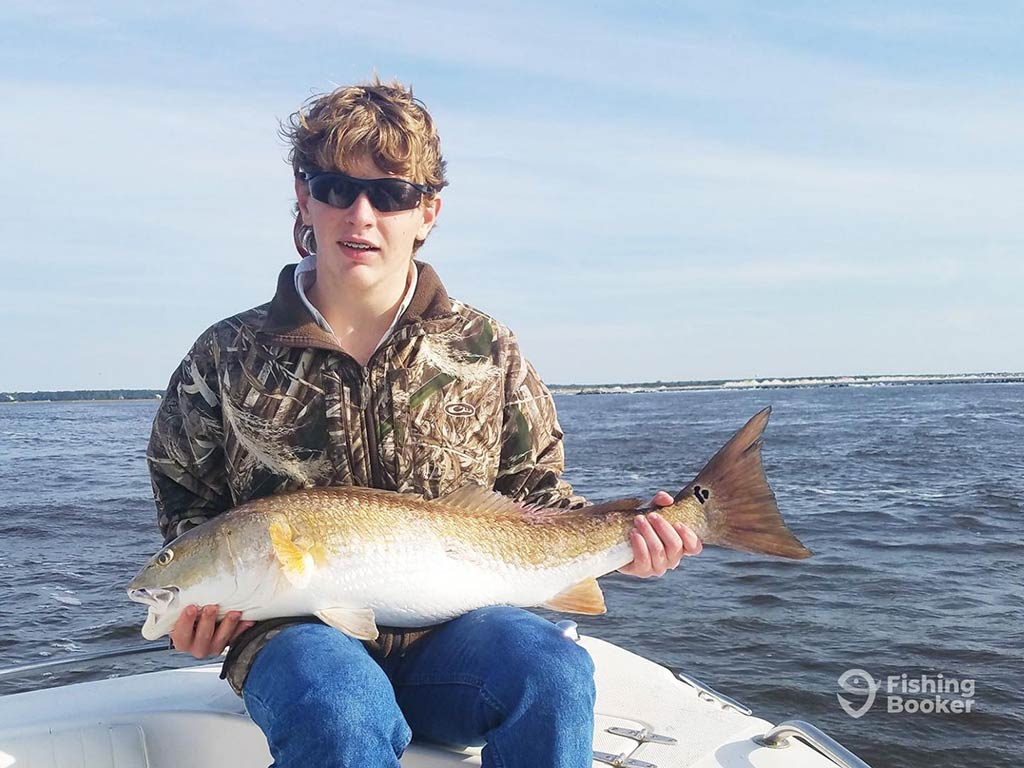
Photo courtesy of Chilly Water Fishing
There’s hardly a more iconic fish in the inshore waters of the North Atlantic than Red Drum. Often referred to as Redfish further south, these are North Carolina’s state saltwater fish. And the coastline from Ocean Isle to North Myrtle Beach, SC is one of the best places to catch them.
“Puppy Drum” (slot-sized Redfish) live in these waters more or less all year round. You can find them schooling around the creeks in the winter, before being joined by larger fish from April through June. Big “Bull” Reds swarm around the inlet and the jetties in September and October, when they come inshore on the heels of the annual mullet run.
Mahi Mahi
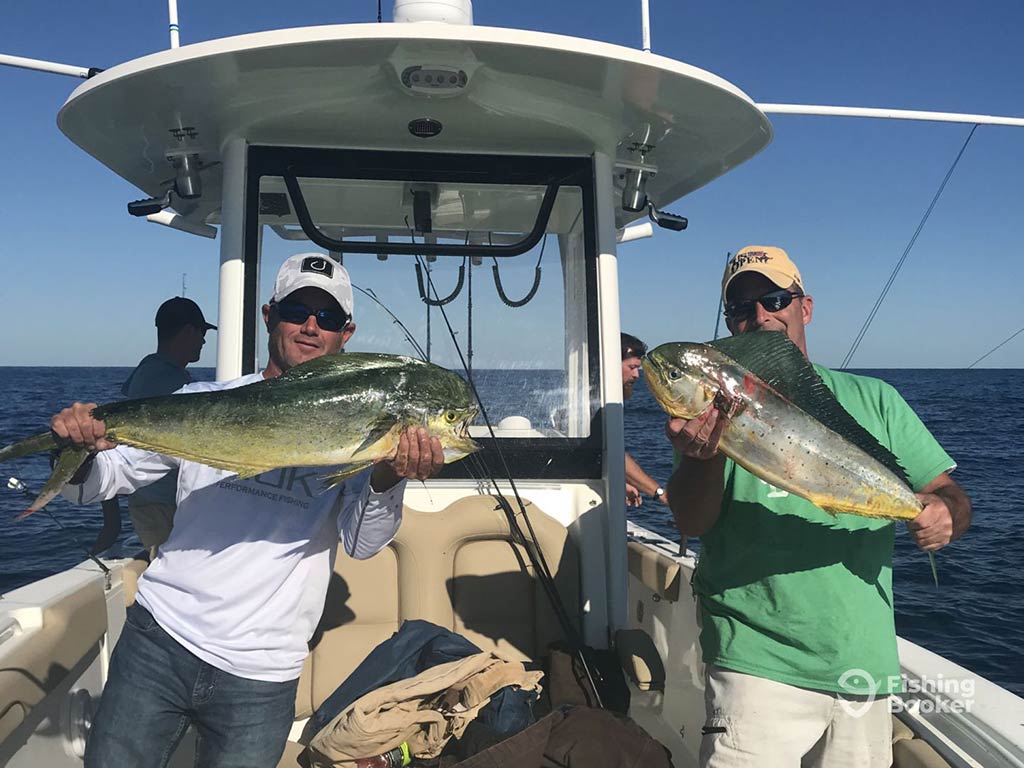
Photo courtesy of Sea J’s Fishing Charters
Offshore, you’ll find a whole range of pelagic deep sea fish. None are more popular than Mahi Mahi – or “Dolphinfish,” as they’re commonly known. These brightly-colored speedsters swim in schools through the Gulf Stream’s warm waters, offering anglers a lot of fun and a delicious meal.
The best time to fish for Mahi Mahi out of Calabash is from May to August. You’ll usually need to travel about 40 miles out, where the seafloor drops and the Gulf Stream brings bait and nutrients rushing up the coast. The best thing about fishing these deep waters is you suddenly have access to a whole range of fish species, from deep sea Groupers and Snappers to mighty Tuna and Wahoo.
What else?
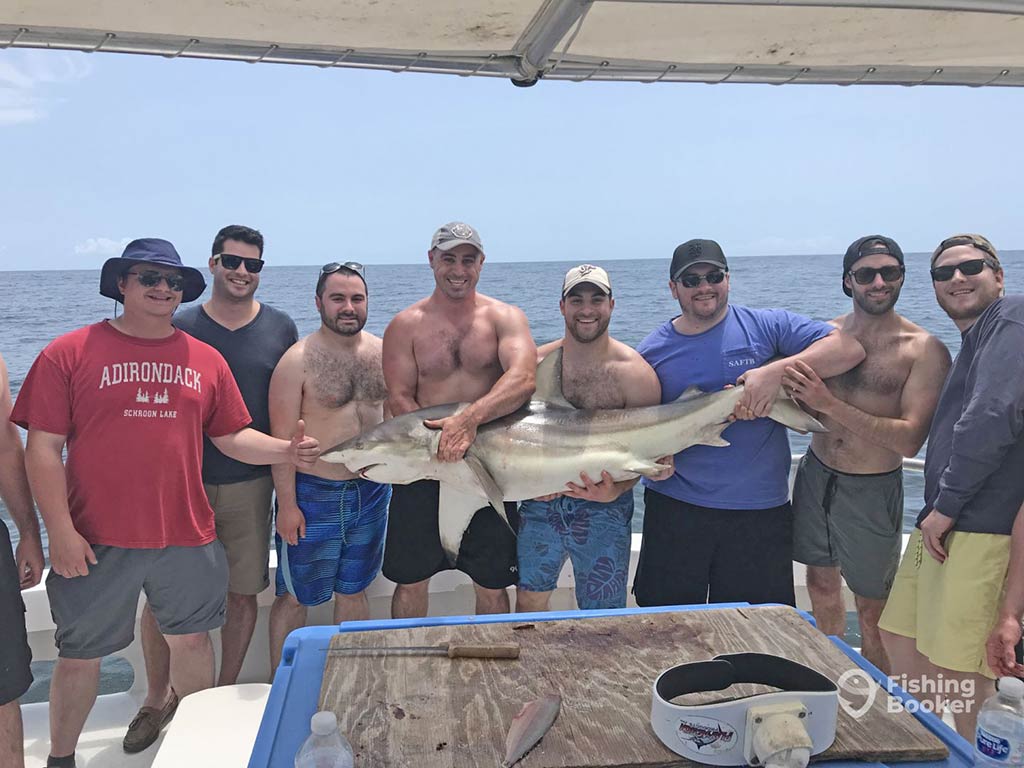
Photo courtesy of Long Line Charters
The Intracoastal Waterway, Little River, and connected creeks and backwaters offer tons of possibilities for inshore anglers. These waters boast a sizable Speckled Trout fishery for fly or light tackle enthusiasts. Add Flounder and Red Drum into the mix, and you’re in with a chance of an “Inshore Slam!” Come in late spring or the fall to give yourself the best chance of catching all three in one day.
Take a boat out of the Little River Inlet and the variety of fish gets even greater. Several species of Shark patrol the local reefs and wrecks, along with Barracuda and Kingfish. Fish near the beaches, and you could find Cobia, Bluefish, Jack Crevalle, False Albacore, or Bonitos depending on the time of year. Or have a go at bottom fishing. Black Sea Bass and Spadefish are attractive – and fairly common – catches.
How to Go Fishing in Calabash
Chartering a boat or taking matters into your own hands? You can’t go wrong with either option in Calabash. However you fish in Calabash, you’re in for a good time. Here are some popular ways of tackling the waters.
Inshore Fishing in Calabash
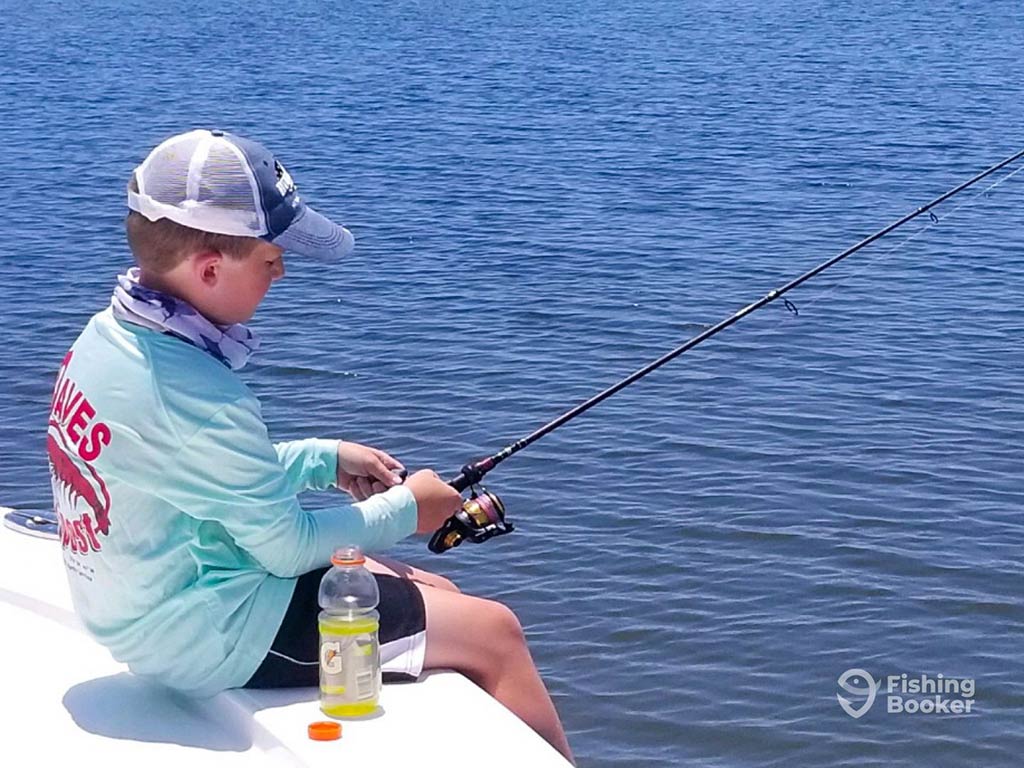
Photo courtesy of Captain Scotty’s Fishing Charters
The inshore waterways from Little River to Shallotte River offer year-round fishing for a whole variety of species, whether you’re with a guide or fishing alone. Trout, Red Drum, Flounder, and Bluefish all hunt in these waters. And all of them respond energetically to the inshore highlight of the year – the spring and fall mullet runs. Come in April or October to experience this fishery at its best.
Many of the local creeks and rivers are dotted with oyster beds and other bottom structure. This is fantastic for fish, who use these areas to hunt bait and raise their young. But it can make boating tricky. Keep an eye on the tides. If you’re not sure whether you can navigate safely, stick to more open waters. Or, even better, hire a guide to show you around.
Nearshore Fishing in Calabash
Take a fishing charter in Calabash, and you’ll probably start by fishing the nearshore waters. There are several reefs and wrecks that are easy to reach in a half day trip and offer up King and Spanish Mackerel, Sharks, Barracuda, and more. While you can catch a lot of fish on these trips, they’re often quite small. That’s not necessarily a problem, though – it’s the perfect introduction to fishing or an activity to enjoy with the kids.
Depending on the time of year, you can also find quality sport fish just off the beaches. This is prime King and Spanish Mackerel territory, while Bonito and Cobia usually make an appearance from April onwards.
Deep Sea Fishing in Calabash
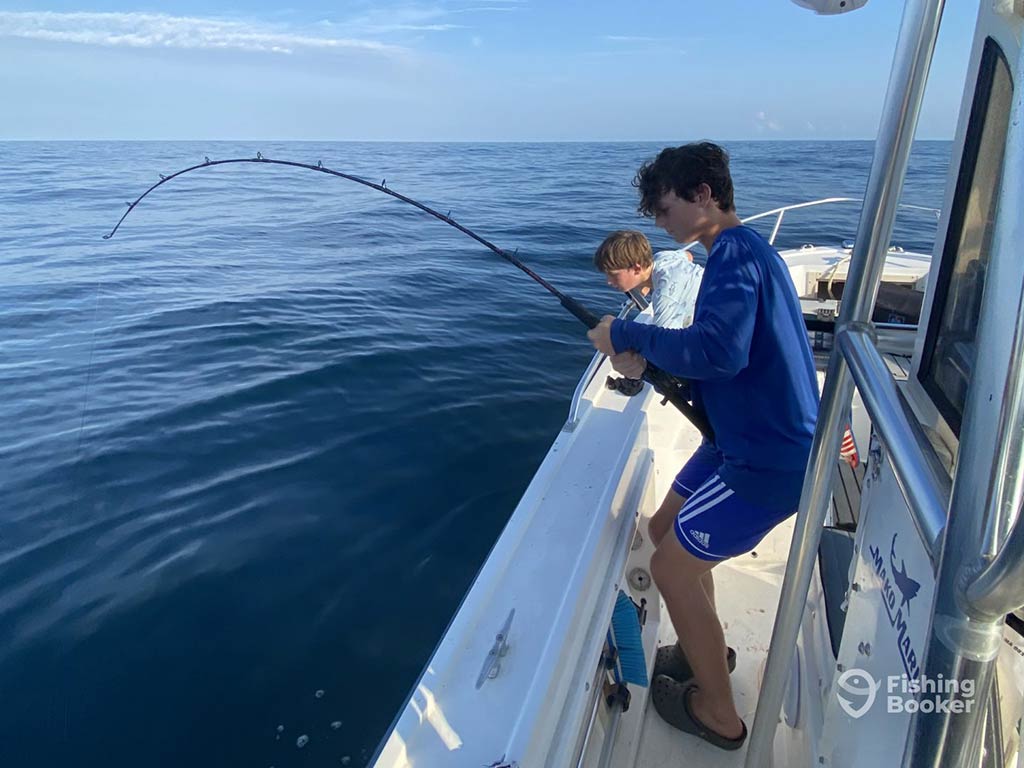
Photo courtesy of Simon Says Charters
If you’ve fished before and want to make the most of your time in Calabash, you have to try deep sea fishing. A full day trip will take you to deeper waters towards the Gulf Stream, where Mahi Mahi, Tuna, Wahoo, and Kingfish grow to impressive sizes.
For the really hardcore anglers, some charters offer extended full day and even overnight trips. These can get you fishing 50 miles offshore and beyond. And the further you go, the better and bigger the fish. Just make sure to come prepared with seasickness medication!
Shore Fishing in Calabash
If the thought of seasickness is just too much, don’t worry. There are several great places to cast your fishing line without even stepping foot on a boat. The jetties at the mouth of Little River Inlet give shore-based anglers the chance to catch migrating monsters – especially during the fall mullet run, when Bull Reds and Gator Trout come right up to the meeting point of Little River and the Atlantic Ocean.
Otherwise, try Sunset Beach Fishing Pier. This is a hot spot for all sorts of beach-bound fish, from Pompano to Bluefish.
Calabash Fishing Spots
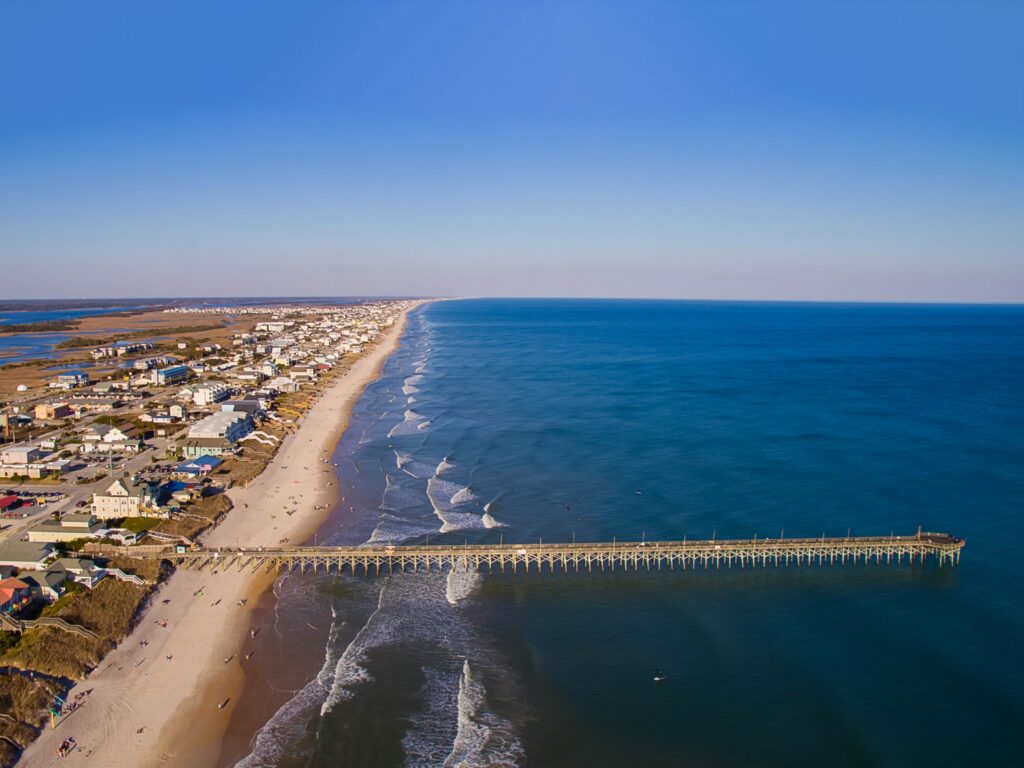
The saltmarshes, islands, and tidal waterways around Calabash create a thriving ecosystem that just begs you to go exploring. Fish around the barrier islands, inlets, and creeks, and you might even forget that the whole Atlantic is only a couple of miles away! Take a boat offshore though, and you won’t want to look back. For a small town, there’s a whole lot to do here. Here are our top picks.
- The Intracoastal Waterway. 300 miles of the Intracoastal Waterway (ICW) run up North Carolina’s coast – that’s 10% of the total length of this vital trade route. The section around Calabash feeds into several small creeks, which make fishing extra productive. These tiny waterways almost completely dry out at low tide, forcing bait to congregate in the ICW itself. Fish around docks near these small creeks, and you’re almost guaranteed to find some greedy predators such as Redfish, Flounder, or something else.
- Little River Inlet. South Carolina’s northernmost inlet is also the main access point to the ocean for anyone fishing out of Calabash. The waters around here are busy with boats – often fishing the inlet’s waters themselves. That’s because there can be a very high concentration of fish here, feeding up on nutrients traveling between inland creeks and the open ocean. Fish the jetties to experience the full variety of fishing around here. You can catch anything from Monkfish to Albacore Tuna, with Bull Redfish, Spanish Mackerel, and lots of Sheepshead all joining in the fun.
- Nearshore reefs and wrecks. Numerous artificial reefs dot the Atlantic seafloor outside of Little River Inlet. Both North and South Carolina constructed these fishy havens from 3–10 miles off the coast. Head 7 miles out, and you’ll also find the General Sherman Wreck, which is a magnet for Spanish Mackerel, Black Sea Bass, and Sharks!
- Lake Waccamaw State Park. If freshwater fishing is more your thing, look no further. You can reach Lake Waccamaw within an hour of Calabash. And it’s well worth the drive. Largemouth Bass, Crappie, Yellow Perch, and Bluegill are just a few of the potential catches in this unique geological sanctuary.
Calabash Fishing Tournaments
The Brunswick Islands play host to a couple of major fishing tournaments every year – and it’s all about the Kingfish. The U.S. Open King Mackerel Tournament has been operating off these shores for over 45 years and attracts hundreds of boats every fall. And that’s not your only chance to catch Kingfish competitively. The Fall Brawl Kingfish Classic takes place in October and November out of Ocean Isle, which is practically in sight of Calabash.
Calabash Fishing Regulations

Because Calabash is right on the border between North and South Carolina, you have to be very careful with your fishing license. You need to travel through South Carolina waters to go from Calabash River to the Little River Inlet or the North Carolina section of the ICW – and there’s no reciprocal license agreement between the two states. This means you will generally need both a South Carolina and a North Carolina saltwater license to fish out of Calabash. If you fish with a guide though, all your licensing will be covered for you.
As well as licensing, you should also be aware of the state regulations for specific species. These are often different in South and North Carolina. Pay close attention, because returning to Calabash with a perfectly legal North Carolina catch could be illegal in the SC waters you’re passing through.
It’s Time to Come Fishing… Calabash-Style
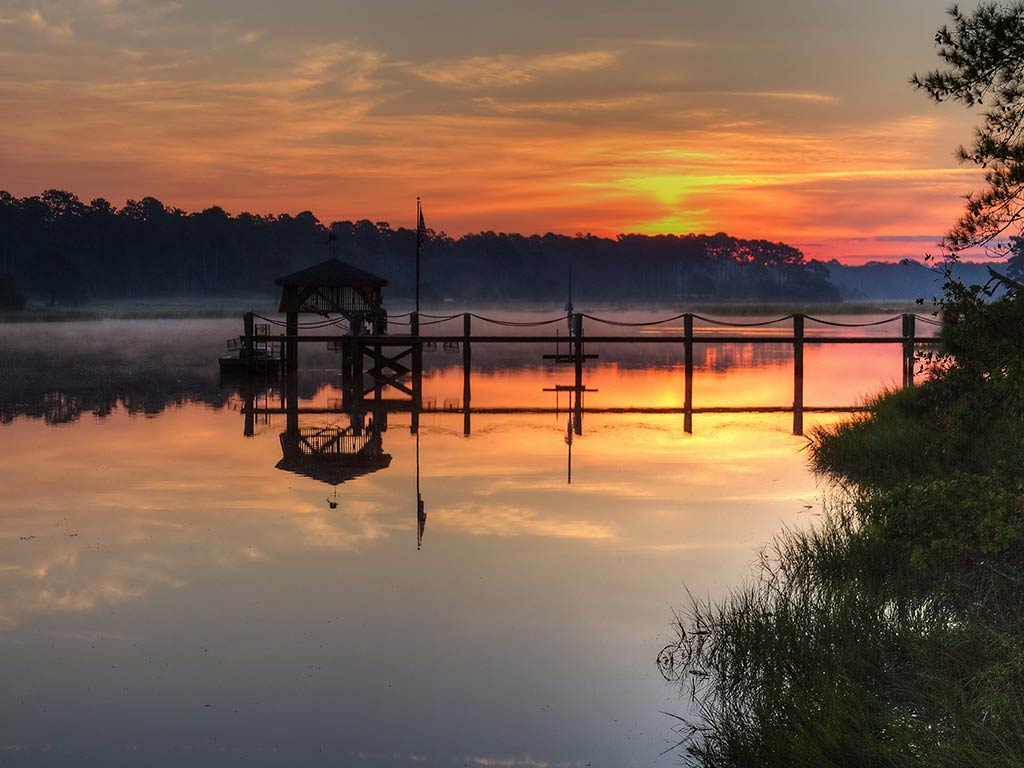
Calabash is famous for having more seafood restaurants than anywhere else of its size in the US. And when you explore the local waters, it’s easy to see why. The variety and quality of fish in this southernmost corner of North Carolina is worth a visit in its own right. So escape the crowds in Myrtle Beach and take to the seas. You’ll find there’s nothing better than drawing into the dock with a bag full of fish… especially when there’s a plate of hot fried Shrimp waiting for you.
Have you been fishing in Calabash? Are you maybe looking for a new place to fish near Myrtle Beach? Tell us your stories and let us know your questions. We love to hear from you!
The post Calabash Fishing: The Complete Guide appeared first on FishingBooker Blog.
https://fishingbooker.com/blog/calabash-fishing/
 CampingSurvivalistHuntingFishingExploringHikingPrivacy PolicyTerms And Conditions
CampingSurvivalistHuntingFishingExploringHikingPrivacy PolicyTerms And Conditions
